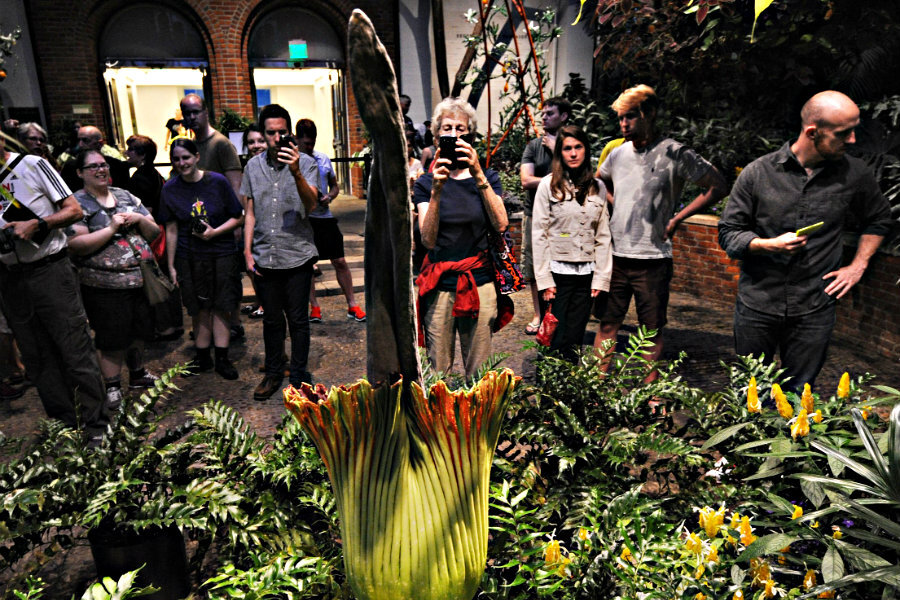What's that smell? US Botanical Garden's corpse flower poised to bloom
Loading...
Come to Washington, D.C., the last week in July, and you may just get a chance to visit the tall and lovely ... corpse flower?
Despite its stench, which has been described as similar to the smell surrounding long dead roadkill or a locker room laundry basket, the corpse flower’s blooms are so rare that they draw hundreds of visitors.
“We’re open until 8 p.m. every night while the flower is getting ready to bloom,” executive director of the US Botanic Garden Ari Novy told WTOP, a local news station. “As soon as we see it’s going into its ‘stench cycle’ let’s call it – we’re going to stay open until 11 o’clock at night.”
The Amorphophallus titanum, or titan arum, is no shrinking daisy. While titan arums in the wild can reach up to 12 feet tall, the US Botanic Garden’s plant is much shorter, as it is both young and raised in captivity.
Yet despite its youth, Dr. Novy told WTOP that, “we’re looking at a little bit of a prodigy” in the soon-to-bloom corpse flower. Scientists predict that the plant’s first blossom, expected by Thursday, will reach six feet high, despite the fact that young plants often have smaller flowers.
The corpse flower never stops stinking, but its smell is somewhat more restrained during the daylight hours. Based on past experience, botanist expect the corpse flower to reach its peak smelliness in the evenings, around 9:30 or 10:00 p.m.
While corpse flower blooms are rare, they are not new to the US Botanic Garden, which has hosted a number of late night stench viewings. The garden displayed corpse flowers as recently as 2007, 2010, and 2013.
Other botanical gardens around the country are also expecting their residents to make a big stink this week. In New York City, the New York Botanical Garden anticipates its titan arum to bloom within the next several days, the first time that garden has seen a corpse flower blossom since 1939. Indiana University’s titan arum is also due to bloom soon. Pittsburgh, Penn. residents and visitors had a chance to visit their very own titan arum in early June this year.
Although it generally takes several years for corpse flowers to mature enough to bloom, the New York Botanical Garden and Indiana University have both been caring for their flowers since 2007 – time is ripe for a flower. The US Botanic Garden’s flower is six years old, on the young end of the maturity range.
Yet despite the many concurrent blooms, the titan arum doesn’t have a blooming season. Instead, the plant blossoms when it has stored up enough energy in its underground stem, called a corm.
The plant’s stench also serves a purpose – much like other flowering plants that attract bees and butterflies with bright colors and sweet smells, the titan arum lures in less attractive pollinators such as flies and carrion beetles with its unique stink.
Beyond its famous smell, the corpse flower is a fascinating plant. According to Mr. Novy, the corpse flower is not one single flower, despite appearances, but rather more than a hundred flowers that come together to form a single floral organ.
Last year, when the Chicago Botanic Garden's titan arum finally flowered after 12 years, more than 50,000 visitors came to observe the spectacle.
The US Botanic Garden, the New York Botanical Garden, and Indiana University are all tracking their blooms online for those who are unable to visit the flower in person.








